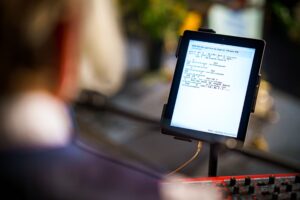EBR Systems (ASX:EBR): Another heart-focused medtech that has gained FDA approval
![]() Nick Sundich, October 1, 2025
Nick Sundich, October 1, 2025
Mere days after Artrya (ASX:AYA) obtained FDA approval for its heart-health technology, EBR Systems (ASX:EBR) has achieved that same feat.
The company made a surprising 15% plunge on the day of the announcement, and the share price has been nuanced since. However, it is still a >$500m company more than when it first listed. Let’s take a look at how it got to this point and what is next.
What are the Best ASX Stocks to invest in right now?
Check our buy/sell tips
All about EBR Systems (ASX:EBR)
EBR only listed in November 2021, but traces its history back to 2003 in Silicon Valley. EBR’s WiSE system (Wireless Stimulation Endocardially) uses wireless technology to deliver pacing stimulation directly to the inside of the left ventricle of the heart, thus preventing heart failure.
This stimulation is delivered when the heart slows, becomes irregular, or when the two ventricles become unsynchronised – and yes, it can detect when this happens. WiSE is the size of a coked grain of rice – 5% the size of a conventional pacemaker – because it has no battery in the heart.

Source: Company/Stocks Down Under
There are no comparable competitors as it is the only lead-less device to deliver CRT (i.e. it does not use leads or wires). Lead or wires can be an impediment for some to have cardiac systems for a variety of reasons. The device itself can last at least 10 years – the battery does need to be replaced but this is a minor procedure.
WiSE is protected by more than 90 patents and was already approved in Europe prior to America. Its approval came off the back of successful Phase 3 data, obtained since the company initially listed. WiSE has been shown to improve patients’ clinical status and reduce heart failure hospitalisations and mortality.
In the Phase 3 trial, completed in early 2023, there was a significant improvement in heart function compared to the benchmark – as measured by a 16.4% reduction in left ventricular end systolic volume compared to 9.3% for the benchmark. WiSE also saw 80.9% safety vs 70% for the benchmark.
FDA approval came through early in the morning on April 12, 2025. This was 1 day prior to the deadline the company had indicated it expected a decision. It came contingent on condition that it would conduct a 320-patient post-approval study over the next 5 years.
A US$3.6bn market initially
The FDA approved EBR’s WiSE in adult patients at least 22 years of age, who are indicated for cardiac resynchronisation therapy (CRT), have an existing implanted right ventricular pacing system and either have had previous unsuccessful implantations or who have had pacemakers where a standard upgrade is not advised due to the risks.
EBR has told investors this market is at least US$3.6bn. But the worldwide Cardiac Rhythm Management Market is worth US$13.6bn – $4.8bn of which is pacing, $4bn of which is defibrillation and $4.7bn is CRT.
But when will it roll out?
EBR made the first implant in June and reached ten patients in mid-September. The company has been waiting for clarity on the reimbursement situation but expects things to ramp up in the months ahead with the situation now sorted.
There will be multiple pathways for Reimbursement including Medicare In-patient and Out-patient payment, and is pushing for broader Medicare coverage.
A smaller-scale market release will occur in the second half of this year amongst sites where the company has existing relationships with Key Opinion Leaders. This will be followed by a stronger push for sales growth will come in 2026, once the company has expanded its sales team.
EBR has US$45/A$69m in cash which does not include restricted cash or marketable securities which cumulatively are US$41.2m/A$64m. EBR also has secured a new state-of-the-art facility in California to manufacture the WiSE units.
The next Cochlear?
EBR was backed by many high-profile investors including Mark Carnegie, Brandon Capital and super funds including Hostplus and HESTA. Upon news of the FDA approval, the boss of Brandon Capital Chris Nave told the AFR that it could become the next Cochlear.
We’ll say that it is obviously closer to being Cochlear than companies without FDA approval, but there is a long way to go and it will take time. Cochlear is capped at nearly A$17bn and its journey has taken many decades, all starting with Professor Graham Clark who began research into helping people hear in 1967 and made the first cochlear implant in 1978. These things do take time.
But all this being said, it is a great achievement by EBR to obtain FDA approval and shareholders have exciting times ahead.
Blog Categories
Get Our Top 5 ASX Stocks for FY26
Recent Posts
Javelin Minerals Jumps 2,900 Percent on Capital Consolidation
A Sharper Share Register Sets Javelin Minerals Up for Its Next Corporate Stage Javelin Minerals (ASX: JAV) surged an extraordinary…
Why Are Droneshield Shares Dropping and Should You Be Worried
DroneShield Selloff Tests Nerves, But Fundamentals Tell a Different Story DroneShield (ASX: DRO) experienced a sharp selloff this morning that…
Straker (ASX:STG): After a difficult few years, could AI be a major growth catalyst?
Is Straker (ASX:STG) just one of those companies using the term ‘AI’ just to attract attention when nothing else is…



